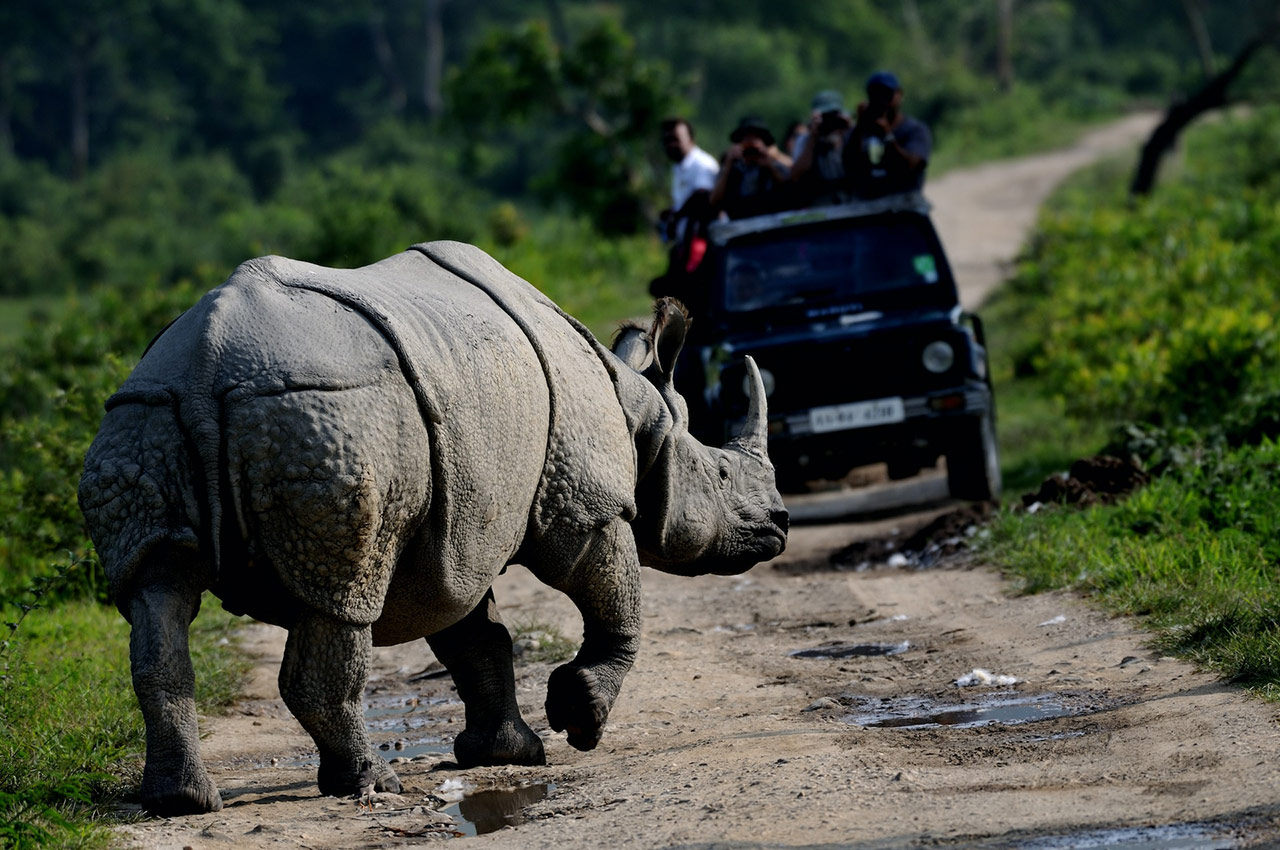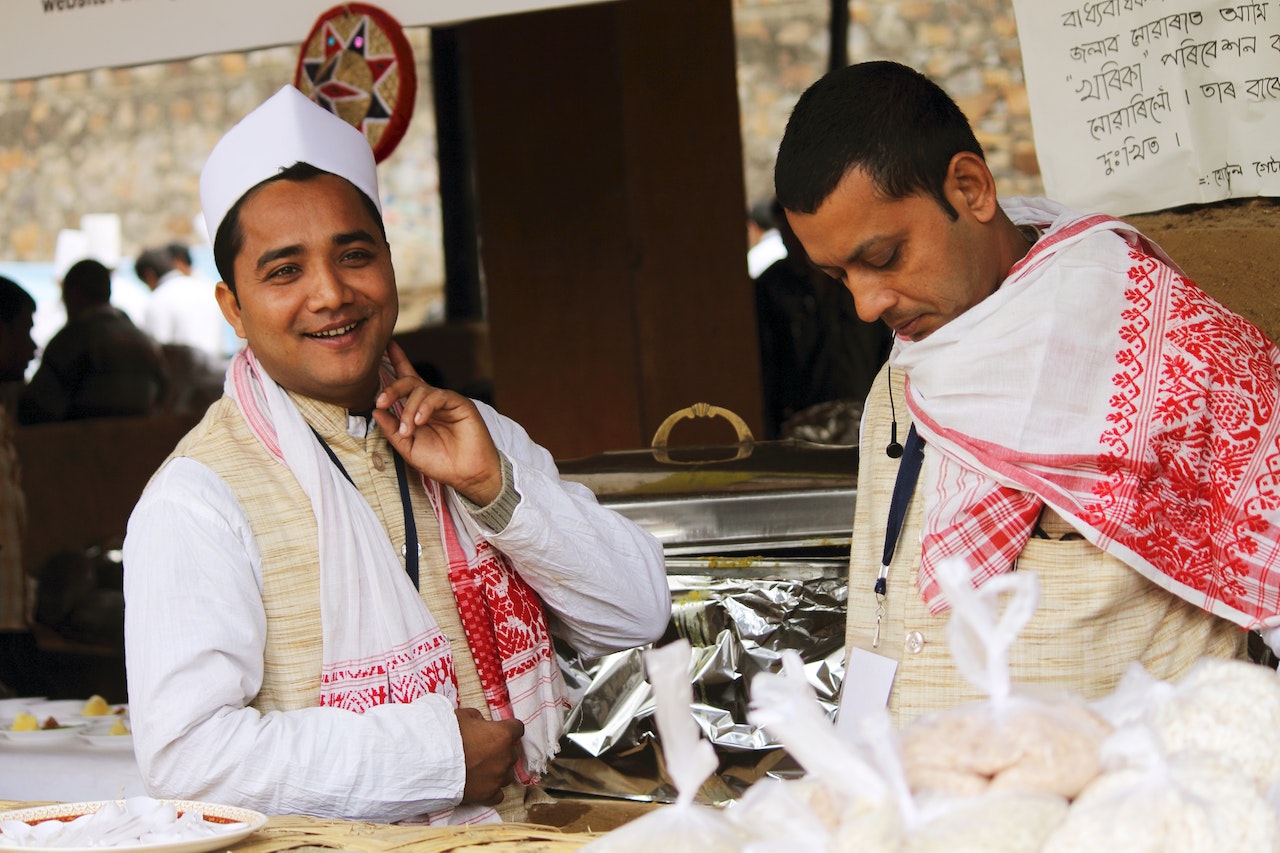
Assam has been plagued with the issue of illegal immigration for decades. Since 1979, the government has been mired by instability, ethnic violence, and civil disobedience campaigns against the illegal immigration in the state, particularly from Bangladesh. Several peace accords signed between the campaigners and the government of India have failed to solve the matter. In the past, massive bloodshed has been witnessed due to the ethnic conflict between the illegal immigrants and the native communities. All that one can hope and look forward to is a peaceful action and efficient development-works carried out by the newly elected government. This said, let us now delve a little beyond politics and explore the vibrant state of Assam.
The Land

Assam, has been a centre port for many north-eastern travellers from other parts of the country. As I write this, I remember my first visit to Guwahati during my mid teenage years. I had gone there for a cultural exchange program from Visakhapatnam. Guwahati, back then, had seemed to me to be one of the biggest city\ies that I had ever seen. It was also the first time that I had ever sighted a crow in my life (a memory itched on my mind till today)! As time passed by, it became a regular stop for me. I would board trains or flights to go beyond the North-Eastern regions of India. Of late, my encounters with other parts of Assam have become more frequent and the diversities of its landscapes and culture excite me even more now than it has in the past.

Surrounded by the lush greenery of tea gardens, the green paddy fields combined with coconut groves, the banana trees that are spread across the terrain, Assam connects the remaining North Eastern states of India through the well known “Chicken’s Neck” or the Siliguri corridor in West Bengal. The State, situated to the south of the eastern Himalayas with a geographical area of 7,850 Sq. Km., is spread over 27 districts. These districts are clubbed into five regions – North Assam, Lower Assam, Central Assam, Upper Assam and the Barak Valley. Assam is divided into two physical divisions, i.e. the plains and the hills. The plains or the valley consists of the Brahmaputra and Barak rivers and the hills consist of the North Cachar and Karbi Anglong Hills. Aasam is surrounded by the remaining six sisters namely, Arunachal Pradesh, Manipur, Meghalaya, Mizoram, Nagaland, and Tripura. It also shares its borders internationally with Bangladesh and Bhutan.

Assam had been under the rule of different kingdoms, from the Kamrup to the Mughals and to the powerful Ahom Kingdom that ruled the state for almost six centuries. Historically, the name ‘Assam’ is said to originate from the Ahom rulers. The Ahoms were the last ruling kingdom till the British took over in 1826. The diversity of the State is evident in the art and culture of the people, of three different races, i.e. the Australoids, the Caucasoid and the Mongoloids. With a wide range of cultures, the state celebrates festivals of various kinds of which Rongali or Bohag Bihu is the most popular. During these festivals the locals of the state celebrate the bountiful and rich harvests and welcome the season of spring.

The main languages of the state are Assamese and Bodo. However, with a huge multicultural population, the people of the state speak other languages such as Bengali, Nepali, Deori, Rabha, and various other dialects depending on the region as well.
Even in the era of globalization, various traditional practices of handicraft production still exist in the state despite the presence of technologically advanced machines. The confluence of various cultures and tribes is evidently reflected in the handicrafts which are simple yet stylish. Products are shaped and artistically carved out from bamboo, canes, wood, and metal that are then transformed into furniture, home decors, toys, pottery and jewelry. Handloom products, which are worn especially by women in their day-to-day lives or for special occasions, are also known far and wide for its rich textures and designs.

There is a popular saying that the culinary skills of women in Assam are determined by how well they cook a dish called ‘khar’. This is a dish that is made by filtering water through the ashes of a dried banana peel (other vegetables such as papaya, gourd etc. are also used as alternatives). Rice being the staple food is found in almost every dish. It is usually eaten with lentils, fish or meat curry and vegetables. Sweets are also made using rice powder. Herbs of various kinds that are recognized as having medicinal cures for various ailments are also used for cooking. The tribes of the region consume fresh and fermented bamboo shoots and fish on a daily basis. A pancake known as ‘pitha’ stuffed with sweet coconut paste or sweet black sesame seed paste is one of the native delicacies.
Assam’s untouched wildlife is popular across the world. It houses several wildlife sanctuaries. Popular among them are the Kaziranga National Park, which hosts two-thirds of the world’s Great One-horned Rhinoceros and boasts of the highest density of tigers among the protected areas in the world and the Manas National park, which is a dwelling for a number of rare and endangered wild species.

It is also a land blessed with rich natural resources such as petroleum, natural gas, limestone and minor minerals. It has abundant riverbeds, huge hydrocarbon potential, low ash coal resources and dolomite deposits, to mention a few. It boasts of having the oldest oil refinery and the first discovery of an oil field in Asia in the city of Digboi in Tinsukia district.
Finally, Assam is incomplete without the mention of the tea gardens and its production. Today, the state possesses more than hundred tea estates and is well known for its quality of tea. Assam manufactures 25 percent of the world’s tea production.
I conclude with a quote by Thompson Chuck, “no place is ever as bad as they tell you it’s going to be.”
Source:
Baruah, Sanjib. “Immigration, Ethnic Conflict, and Political Turmoil–Assam, 1979-1985.” Asian Survey 26.11 (1986): 1184-1206.





